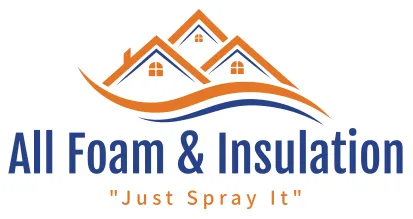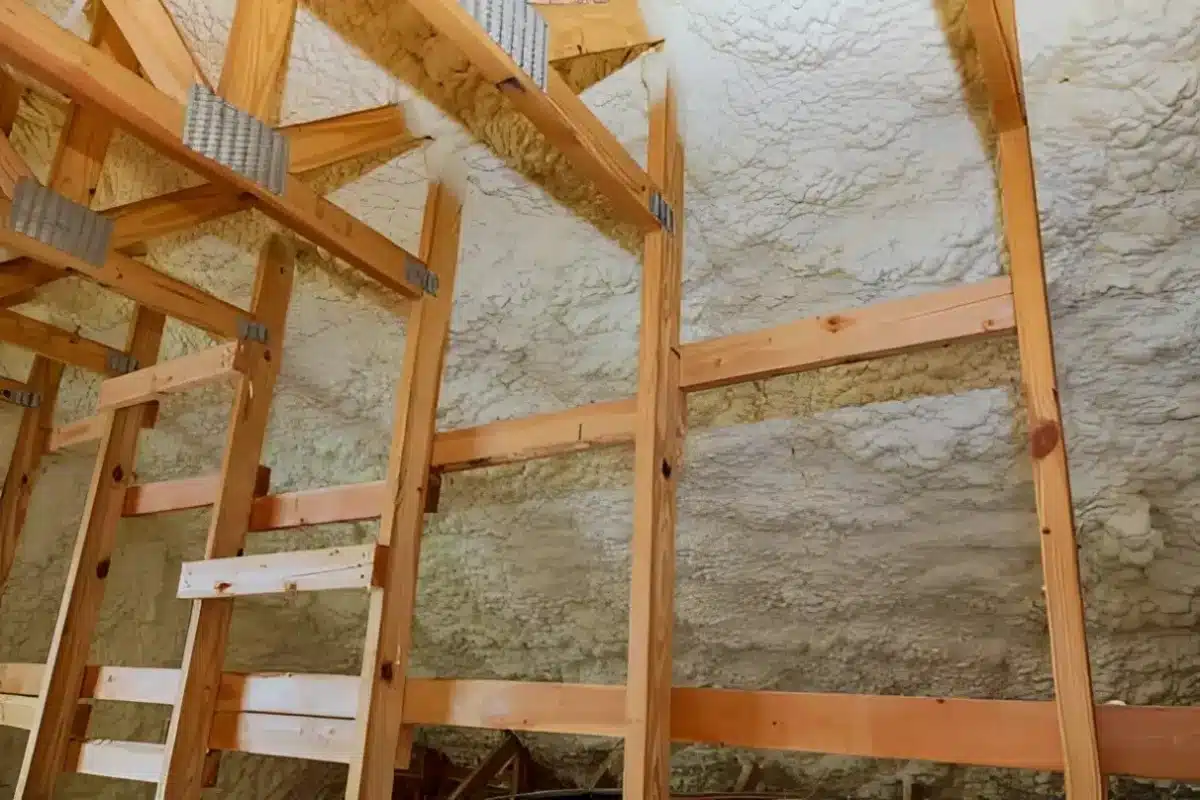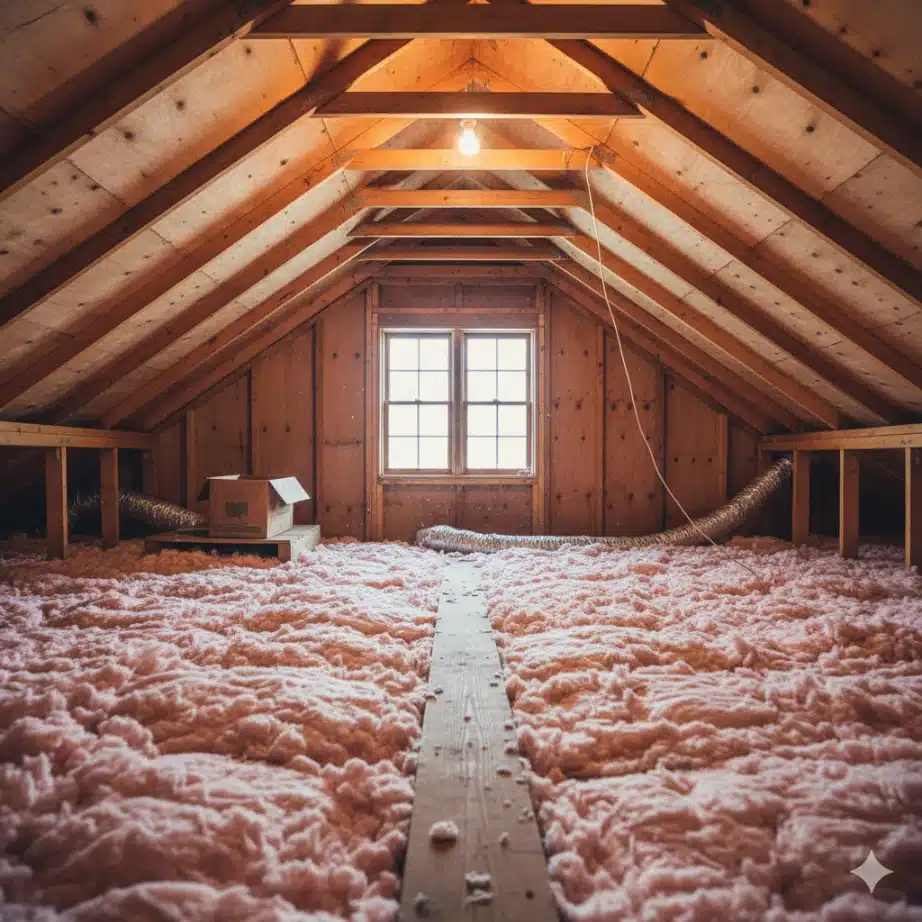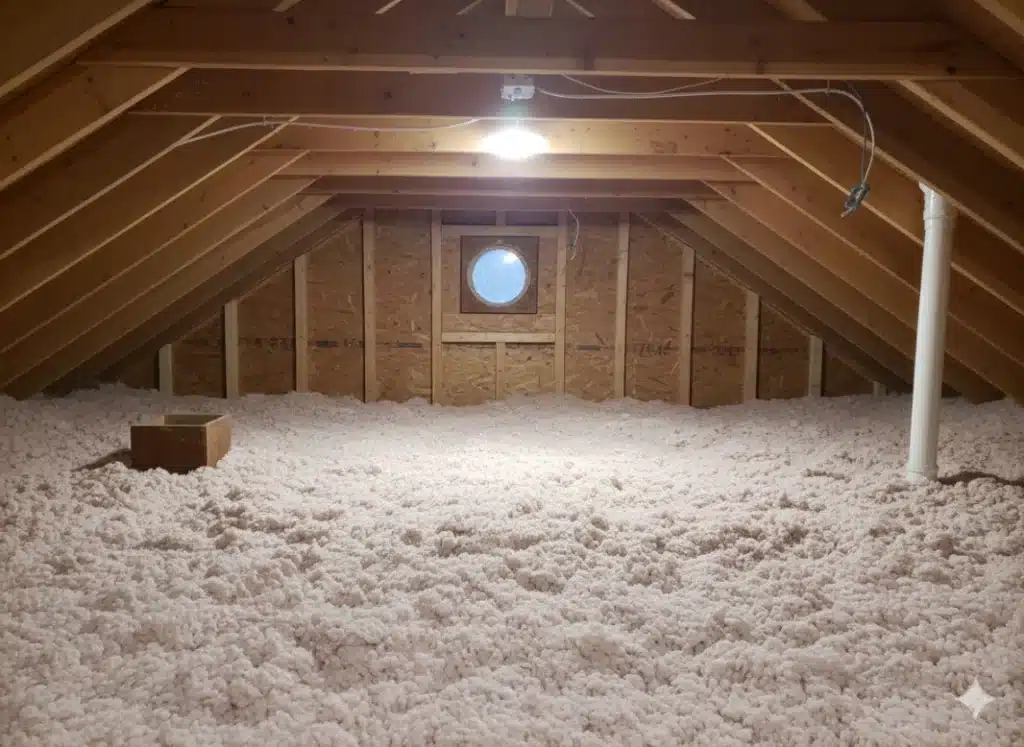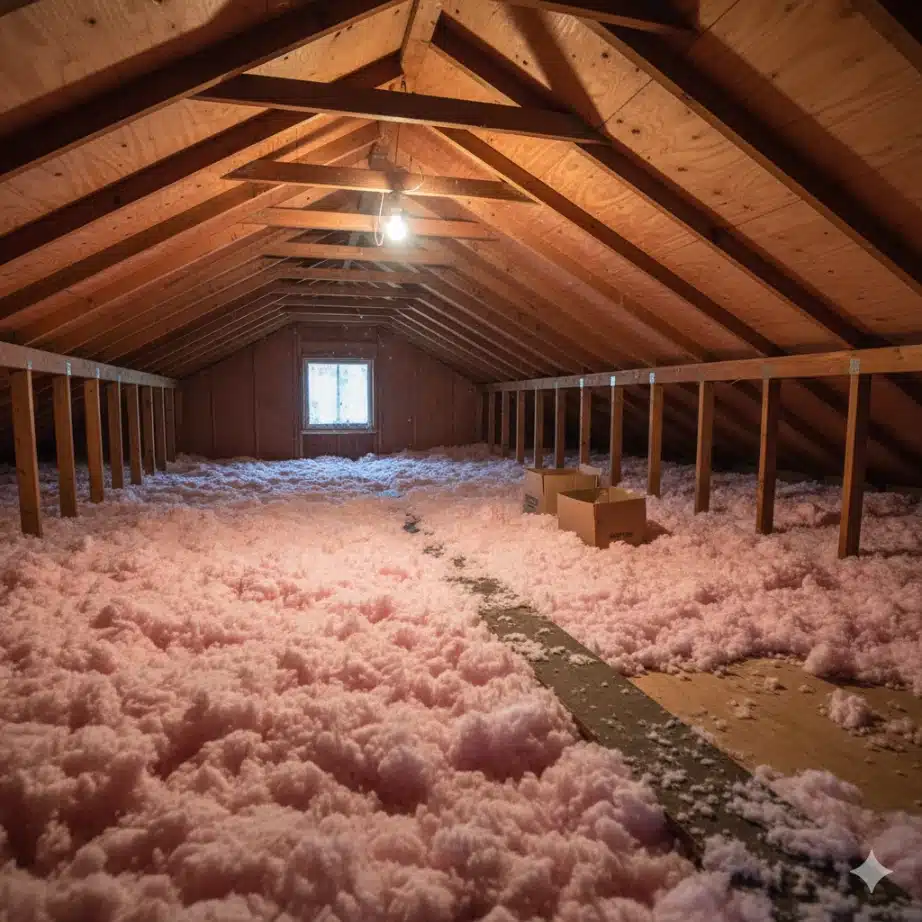Insulation application directly adds value to a home by lowering energy consumption, which translates into significant savings on utility bills. It works by creating a thermal barrier that resists the flow of heat, keeping your home warmer in the winter and cooler in the summer. This reduces the strain on your heating and cooling systems, allowing them to run less often and more efficiently. The result is not just lower monthly expenses but also a more comfortable living environment and an increase in the property’s overall market value.
This guide explains the connection between insulation, energy costs, and home value. Drawing on years of experience in thermal performance and building science, this guide from All Foam & Insulation, LLC will help you understand how a well-insulated home is a smarter, more valuable asset. You’ll learn how insulation works, how much you can expect to save, and what to consider before starting a project.
How Insulation Lowers Your Energy Bills
To understand how insulation saves money, it’s helpful to know how heat moves. Heat naturally flows from warmer areas to cooler areas through three processes: conduction (through solid materials), convection (through air or liquid movement), and radiation (through electromagnetic waves). Insulation is specifically designed to slow down this movement.
The effectiveness of insulation is measured by its R-value. A higher R-value indicates greater resistance to heat flow. When your home is properly insulated, this resistance keeps the conditioned air you pay for inside and the unconditioned outside air from getting in. For example, in the winter, it keeps the warm air from your furnace from escaping through the attic and walls. In the summer, it stops the sun’s heat from penetrating your roof and heating up your living spaces.
This reduction in heat transfer means your HVAC system doesn’t have to work as hard or as long to maintain a comfortable temperature. A report from the U.S. Environmental Protection Agency’s ENERGY STAR program suggests that homeowners can save an average of 15% on heating and cooling costs by air sealing their homes and adding insulation in attics, floors over crawl spaces, and accessible basement rim joists. These savings can be even higher in older homes or in regions with more extreme temperatures.
The Impact of Insulation on Home Resale Value
Beyond monthly savings, insulation is an upgrade that adds tangible value to your property. Energy efficiency is a key feature for modern homebuyers, who are increasingly aware of long-term ownership costs. A home with low utility bills is more attractive on the market and can often command a higher selling price.
Investing in insulation offers a strong return. According to the Remodeling 2024 Cost vs. Value Report, an attic insulation upgrade using loose-fill fiberglass is one of the few home improvement projects that can recoup over 100% of its cost at resale. This makes it one of the smartest investments a homeowner can make, as it pays for itself through both energy savings and increased home equity. An energy-efficient home may also appraise at a higher value, as appraisers are increasingly trained to recognize and account for green and energy-saving features.
Regional Insulation Recommendations
The amount of insulation you need depends heavily on your local climate. The U.S. is divided into different climate zones, each with its own recommended R-values. For example, here in Oregon (which is mostly in Climate Zone 4C), the U.S. Department of Energy has specific recommendations for achieving optimal energy efficiency.
The following table provides a general guide for recommended R-values in an existing home in a mixed-marine climate like the Pacific Northwest.
| Home Area | Recommended R-Value | Common Insulation Types |
|---|---|---|
| Attic | R49 to R60 | Loose-Fill Fiberglass, Cellulose, Spray Foam |
| Walls (2×4) | R13 to R15 | Fiberglass Batts, Spray Foam |
| Walls (2×6) | R19 to R21 | Fiberglass Batts, Spray Foam |
| Floors | R25 to R30 | Fiberglass Batts, Spray Foam |
Bonus Tip: Before you invest in an insulation project, check the Database of State Incentives for Renewables & Efficiency (DSIRE), which is a comprehensive source of information on incentives and policies that support energy efficiency in the United States. Many states and utility companies offer rebates or tax credits that can lower the upfront cost of your project.
Things to Consider Before Making a Decision
Before upgrading your insulation, it’s important to assess your home’s specific needs to ensure you choose the right solution.
- Assess Your Current Insulation: The first step is to check what you already have. In your attic, look to see how much insulation is present and what condition it’s in. If it’s below the top of your floor joists or appears compressed, damp, or uneven, it’s likely underperforming.
- Prioritize Air Sealing: Insulation works best in a sealed environment. Air leaks in your attic, around windows, and in your basement can undermine the effectiveness of new insulation. Sealing these gaps before or during insulation installation is a critical step for maximizing energy savings.
- Understand Different Material Costs: The cost of insulation varies by material. Fiberglass batts are generally the most affordable option, while spray foam has a higher upfront cost. However, spray foam also provides a superior air seal and a higher R-value per inch, which can lead to greater long-term savings.
- Consider Professional Installation: While some homeowners might be able to install fiberglass batts themselves, materials like spray foam and loose-fill cellulose require specialized equipment and expertise. A professional installer can ensure the material is applied correctly for optimal performance and safety.
Bonus Tip: Pay special attention to attic hatches, recessed lighting fixtures, and plumbing vents. These are common sources of heat loss and air leakage that are often overlooked. Sealing and insulating these spots properly can make a big difference.
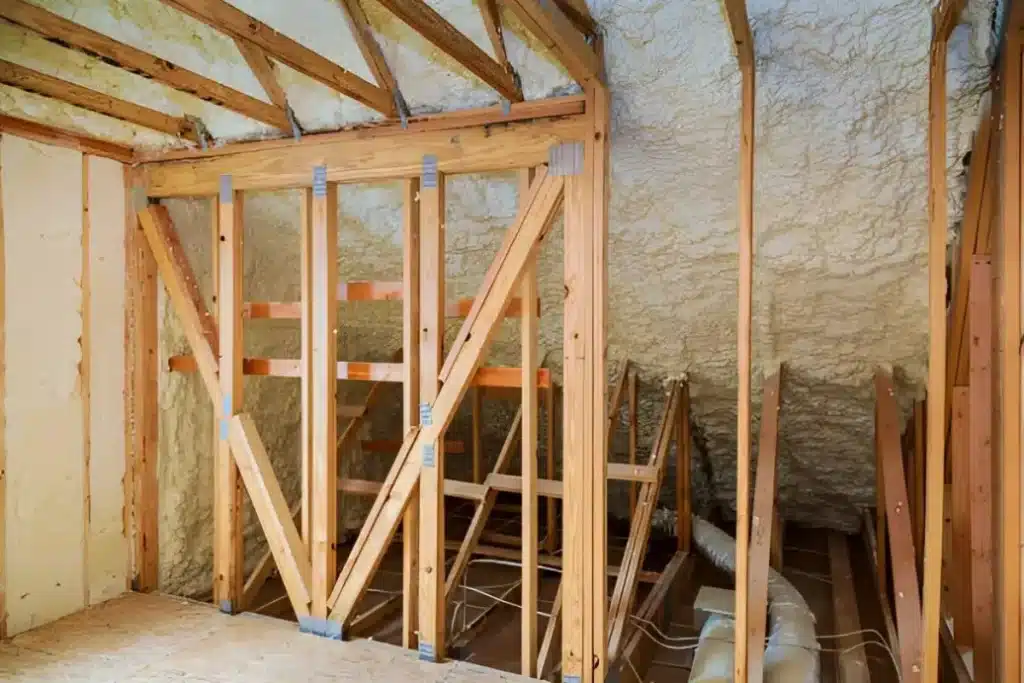
Frequently Asked Questions About Home Insulation
Does new insulation improve indoor air quality?
Yes, certain types of insulation can help improve indoor air quality. By creating an air barrier, materials like spray foam can reduce the amount of dust, pollen, and other outdoor pollutants that enter your home.
Can insulation help with noise reduction?
Absolutely. Insulation is a great sound dampener. Materials like fiberglass, cellulose, and spray foam absorb sound waves, which can reduce noise transfer between rooms and from the outside.
How long does home insulation last?
The lifespan of insulation depends on the material. Fiberglass and mineral wool can last for decades if they remain dry and undisturbed. Cellulose may settle over time and require topping off after 15-20 years. Spray foam insulation is very durable and should last for the life of the home.
What are the signs my home needs more insulation?
Common signs include high energy bills, rooms that are difficult to keep warm or cool, noticeable drafts, and ice dams forming on your roof in the winter. If you notice any of these, it’s a good idea to have your insulation levels inspected.
Is spray foam insulation better than fiberglass?
Each material has its advantages. Spray foam offers a higher R-value per inch and creates an effective air barrier, making it excellent for performance. Fiberglass is more cost-effective and easier to install in certain situations. The best choice depends on your budget, goals, and the specific area of your home being insulated.
Does attic insulation really make the biggest difference?
For most homes, yes. Since heat rises, the attic is often the single largest source of heat loss in the winter and heat gain in the summer. Properly insulating your attic is usually the most impactful energy efficiency upgrade you can make.
A Valuable Investment in Your Home’s Future
Upgrading your home’s insulation is a practical investment that provides immediate and long-term benefits. It lowers your monthly energy bills, makes your home more comfortable year-round, and increases its value when it’s time to sell. Choosing the right insulation, however, requires a clear understanding of building science and material performance.
For a professional evaluation of your home’s needs and a clear path toward better energy efficiency, consult with specialists. To discuss your project, contact All Foam & Insulation, LLC at (541) 826-9600 or reach out via email at [email protected] for guidance on finding the most effective solution for your property.
Sources
- ENERGY STAR – A U.S. Environmental Protection Agency program providing information on energy-efficient products and practices, including average savings from insulation.
- Remodeling 2024 Cost vs. Value Report – An annual report from Zonda Media that compares the costs of common remodeling projects with the value they retain at resale.
- U.S. Department of Energy – Provides official recommendations for insulation R-values based on climate zone for new and existing homes.

